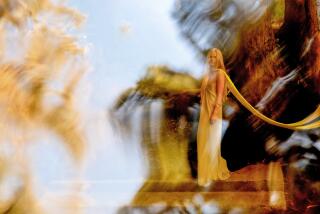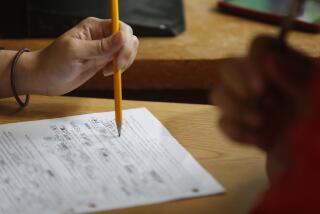We dream to remember, scientists say
- Share via
We can’t remember everything. Maybe that’s why we dream.
Researchers at Northwestern University suggest as much in a recent study in the Journal of Neuroscience.
Money was involved. The 60 participants in the study were told how much they would earn by remembering locations of each of 72 objects on a computer screen. Some were more valuable than others. The objects also were accompanied by a sound – a dog with a bark, for example.
The subjects were split into groups – some slept and were played sounds, others slept without sounds. Other groups stayed awake, with or without those sounds.
Everyone tended to remember high-value objects more than low-value ones, as expected.
But sleepers who were cued with sound had a marked increase in their ability to recall the low-value objects whose sounds were played. Sleepers exposed to sound also outperformed those awake who were exposed to sound, for all the objects.
“We think that what’s happening during sleep is basically the reactivation of that information,” said Delphine Oudiette, a postdoctoral fellow in the department of psychology at Northwestern and lead author of the study. “We can provoke the reactivation by presenting those sounds, therefore energizing the low-value memories so they get stored better.”
Dreaming, she added, amounts to a “rehearsal” that allows our brain to consolidate memory.
Neuroscientists and psychologists have been as obsessed with dreaming as have poets, philosophers and visual artists. Mostly, they are trying to find out what relation these periods of intense and sometimes bizarre narratives have in the function of the brain. Many suspect that dreams relate to memory.
Recently, a team of scientists in Japan taught a computer to “guess” the imagery in a dream. They woke people just as light dreaming began (an electroencephalogram, or EEG, can show when we start to dream) and compiled a database of images sleepers reported having seen. Then they exposed the subjects to similar images while awake, and took brain scans. They then “taught” computers to guess dream content based on comparisons among those scans.
Woof! Woof! Can you remember how many participants and objects there were? Maybe a nap would help.







